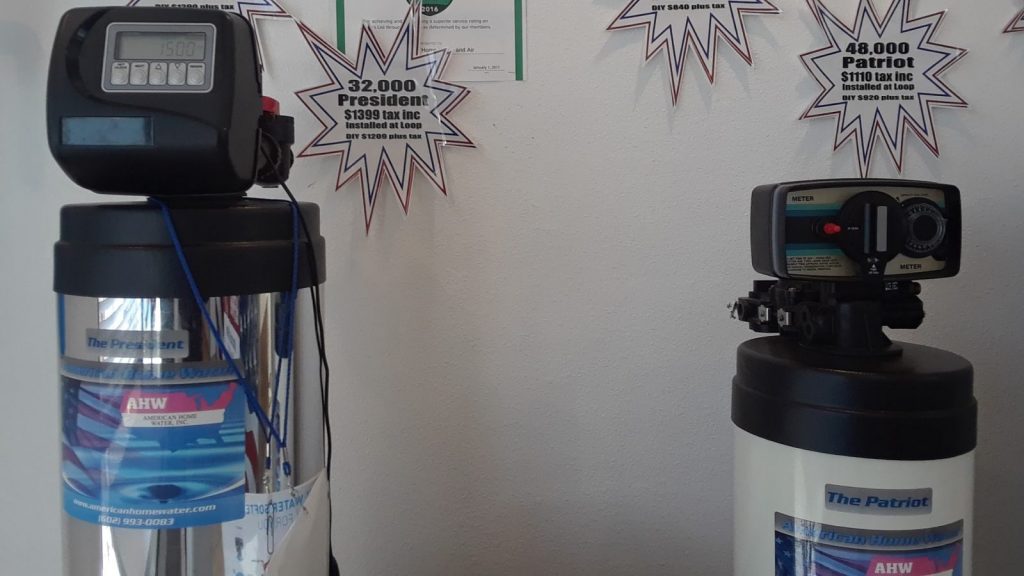Due to calcium, magnesium, and other hard elements in our water sources, water softeners have become quite common in many homes. Water softeners help make the water soft by removing or reducing the amount of these elements that get to our plumbing system. This, on the other hand, makes it ideal for laundry, cleaning, drinking, showers, etc.
Hard water not only makes soaps and detergents less effective but also results in scum formation, which affects the color of your garments. Also, it leads to various problems in the plumbing system as the minerals corrode the pipes and appliances. This subsequently leads to leakages or clogging of the system, necessitating costly repairs.
With water softeners, all these problems are solved, and you can enjoy using soft and clean water in your home. However, there have been several concerns about the relationship between a water softener and septic systems. How does softening your water affect your septic system? But first, here are some vital statistics to note.
Important Facts and Statistics to Note
- Around 85% of water in the US is regarded as hard water
- As per the US EPA estimates, there are around 10 million water softeners installed in the US. There are also over 26 million septic systems in current homes, with 40% of these being in new homes.
- Water softeners remove ions such as magnesium, calcium, etc., from water
- Water softeners also get rid of various metals from the water, such as Iron, Mercury, Lead, Barium, etc.
- A whole-house water softener system regenerates with time or demand.
Effects of Water Softeners on Septic Systems
Over the years, as early as the 70s, various studies have been conducted to determine the effects a water softener would have on your septic system. These studies have had varying results about the issue. Some of the earlier studies indicate that these two systems don’t affect each other.
However, newer studies have come out to dispute these findings. They claim that, in reality, water softeners have effects on septic systems. Earlier research mistakenly used aerobic bacteria instead of aerobic ones, leading to some misguiding findings.
To remove the hard elements from water, we add sodium. Experts believe that this sodium has serious effects on both the anaerobic digester and the drain field’s hydraulic conductivity. Since septic tanks are not designed with excess hard water regeneration in mind, the backwash might also result in hydraulic overloading.
Other negative effects of water softeners on septic tank systems include:
- Hasty deterioration of septic tanks, especially the concrete ones, due to the high salt concentration in the backwash.
- Killing the desired anaerobic bacteria: The regenerated backwash from the water softening process injects more sodium chloride into the septic system. This, in return, increases the septic’s salinity, affecting the PH and killing the desirable bacteria. Fewer bacteria mean less anaerobic digestion and thus ineffectiveness of the septic tank.
- Reduced Hydraulic conductivity: Research shows that more sodium in the soil causes it to swell. This is especially in soils where montmorillonite clay is in abundance. The swelling of this soil leads to reduced hydraulic conductivity. SAR (soil absorption ratio) measures how much sodium a solution contains compared to calcium and magnesium ions.
All this shows the negative effects of water softener salt and septic systems.
But how can you rectify this? Is it possible to have both systems working harmoniously without affecting the other? Let’s find out.
Solutions to the Water Softener and Septic Systems Problem
Both of these systems are pretty much important in our homes. The effects of hard water in our homes could be more devastating if water softeners were not installed. But how do we eliminate the problems these softeners pose for the septic systems?
1. Install Modern Water Softeners
Newer water softeners are always more efficient than older versions. This means that they will require less sodium chloride in the softening process, thus causing less salinity in septic tanks.
Less salinity in the septic means a reduced effect on the anaerobic bacteria. This, on the other hand, allows the bacteria to properly do its intended work – digestion of the organic waste.
2. Substitute Sodium Chloride with Potassium Chloride
Instead of using sodium chloride as the softening agent, Potassium Chloride would be an excellent substitute. While it might be a bit pricier, it offers a solution for several issues. One, your household is safe from consuming too much sodium chloride. And two, less sodium chloride reaches your septic tank.
Also, Potassium chloride doesn’t easily cause hydraulic conductivity as the amount needed to cause the effect is way too much compared to sodium chloride.
3. Set your System’s Regeneration Based on Water Flow
Most people set their water softeners to automatically regenerate after several minutes. This might cause an unnecessary increase in the amount of backwash. The higher the amount of backwash, the more the amount of sodium chloride that goes into the septic tank.
You can tackle this by setting the system to regenerate based on demand or necessity. This will significantly reduce the amount of backwash.
4. Only Treat the Necessary Water
While you might be tempted to soften every drop of water getting into your home, it’s not always necessary. Softening water that gets into the house might reduce the amount of sodium chloride used and reduce negative effects.
For instance, it’s not a must you treat the water being used outdoors to water the garden, lawn, flowers, etc. You can use this in its hard form.
5. Get a Bigger Septic Tank
Designing a larger septic tank than the actual one needed can go a long way in accommodating the load from the water softener’s backwash. This way, the hydraulic effect won’t have much effect on the septic system’s absorption capacity.
6. Avoid Soil Containing High Clay Content
The septic system’s absorption area shouldn’t contain high levels of clay soil. The hydraulic conductivity of clay soils is relatively low, thus not the best quality for a leach field.
However, sometimes it’s not always possible to avoid clay soil completely. When this is the case, ensure you avoid a leach field rich in montmorillonite (swelling clay). The less a soil contains this type of clay, the less it will be affected by the water softening agents (potassium or sodium chloride)
7. Reroute the Backwash Away from the Septic System
With the help of a professional, you can redirect your backwash brine from the septic tank. This is if you want to prevent any failures in your septic system.
Many people will say that this is a complex and expensive process, but it certainly isn’t. An expert can make some minor adjustments to your water softener and plumbing system to ensure that a pipe directly discharges the backwash brine into a designated discharge container.
This might prevent many problems you would have to deal with if the backwash reaches drains into that septic tank.
So, while the problem between the water softener systems and septic tanks might seem too complex, one can find a simple solution. Any combination of these tips can help you enjoy the services of these two systems without interferences.
[related_posts_by_tax posts_per_page="3" format="thumbnails" image_size="medium"]










